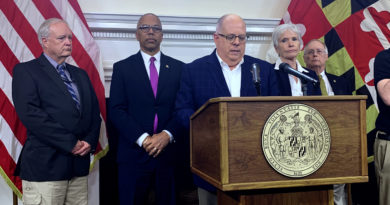A Giant Leap for Womankind: Reflecting on Life, Legacy of Katherine Johnson
As we eclipse Black History Month and focus our attention on memorializing the myriad women who have shaped history, let us honor a woman who deserves recognition in both months—a woman who quite literally brought the stars within our reach.
Katherine Johnson, one of the black, female NASA mathematicians immortalized in the award-winning 2016 film Hidden Figures, passed away Feb. 24. She was 101 years old.
Johnson grew up in the small West Virginia town of White Sulphur Springs. At 21, she was already lightyears ahead of the curve, breaking barriers by being one of three African American graduate students to integrate West Virginia University.
Making the difficult choice many mothers face, Johnson decided to press pause on her education and prioritize her family after the first semester. When her children were a bit older, Johnson turned her attention back to her career and would watch it take flight as she pursued an opportunity to work for the all-black West Area Computing section of NASA’s precursor.
For the next eight years, Johnson performed complicated calculations for the engineers who pioneered American space travel, analyzed the trajectory for America’s inaugural human spaceflight, and mapped the ideal landing position for spacecraft.
Her most famous project, however, is undoubtedly running the orbital flight calculations for astronaut John Glenn, America’s first man in orbit, making that mission a success and allowing the US to catch up to the Soviet Union in the space race. NASA says that despite the illumination Johnson’s work on the Glenn mission received, her favorite project was syncing the Apollo lunar module with its command and service module, enabling man to walk on the moon. President Barack Obama awarded Johnson the Presidential Medal of Freedom in 2015 for her career accomplishments but also to highlight her example for minorities and women in STEM.
Katherine Johnson’s influence on contemporary American society is omnipresent. A large part of the success of NASA, as well as America’s fledgling space program, can be attributed to her. She overcame barrier after barrier, including segregation and discrimination, the trials of working motherhood, and the loss of her first husband, to help America win the space race and rewrite history.




